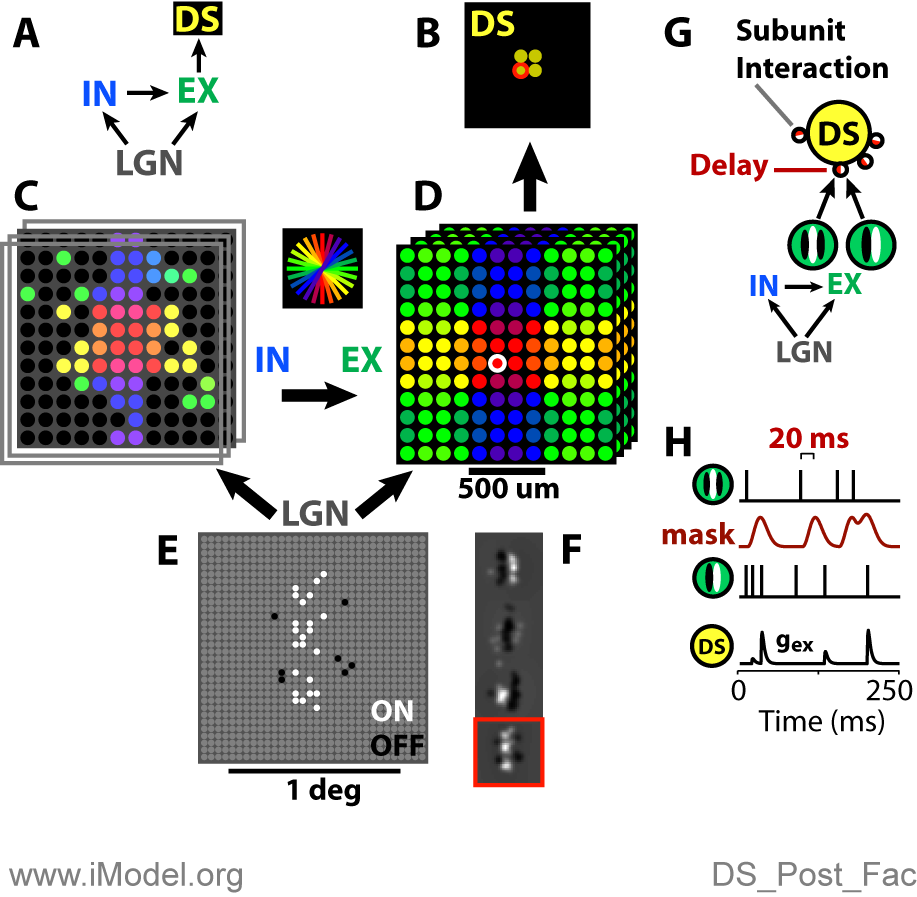
DS_Post_Fac
DS_Post_Fac_T2
DS_Post_Sup
DS_Pre_Fac
DS_Pre_Sup
DS_Simp
Variations
DS_Post_Fac ... .1 ... .1.a ... Poiss ... .Unif.1 ... .Unif.2 ... .Unif.3 ... .Unif.4 ... .Unif.5 ... .x.1 ... .x.1.a
Direction Selective, Post-Synaptic, Facilitatory
Troyer TW, Krukowski AE, Priebe NJ, Miller KD (1998) Contrast-invariant orientation tuning in cat visual cortex: thalamocortical input tuning and correlation-based intracortical connectivity. J Neurosci 18:5908--5927.

(B) A population of four V1 DS complex cells.
(C) Within a 12,12,4 (x,y,z) lattice of V1 inhibitory simple cells (IN), cells in the 3rd z-layer that are presynaptic to the white-circled cell in (D) are shown in color. Colors indicate preferred orientation (see orientation key between panels C and D).
(D) The 12,12,4 lattice of V1 excitatory simple cells (EX) is shown where color indicates orientation (see orientation key). The white-circled cell gets IN inputs as marked in (C) and LGN inputs as marked in (E). The spatial LGN-driven excitatory RF is shown at the bottom of F (red square). This cell contribute input to the DS cell in (B, red-circle).
(E) The LGN lattice is 32,32,2, where the two z-layers represent ON and OFF cells. The 12,12,4 lattices of EX and IN cells align to the central 12,12 sub-grid of cells in the LGN, in terms of their RF centers within the field of view.
(F) Approximate spatial RFs for the four EX cells at the x,y position indicated by the white circle in (D). Note that the spatial phase of the RF shifts by 90 deg between z-layers.
(G) Each DS cell in (B) receives an excitatory conductance that is the sum of signals from subunits that operate on pairs of EX inputs. The RFs of the inputs pairs are approximately in quadrature (90 deg phase shift).
(H) The spike trains from one EX unit in a pair (top black trace) is convolved by a causal mask that peaks at DT 20 ms. The resulting mask signal (red trace) is then used to multiply the amplitude of the spikes from the second unit in the pair. These scaled spikes are then convolved with an alpha function that sets the time course of the postsynaptic excitatory conductance to generate an input to the postsynaptic DS cell (bottom black trace).